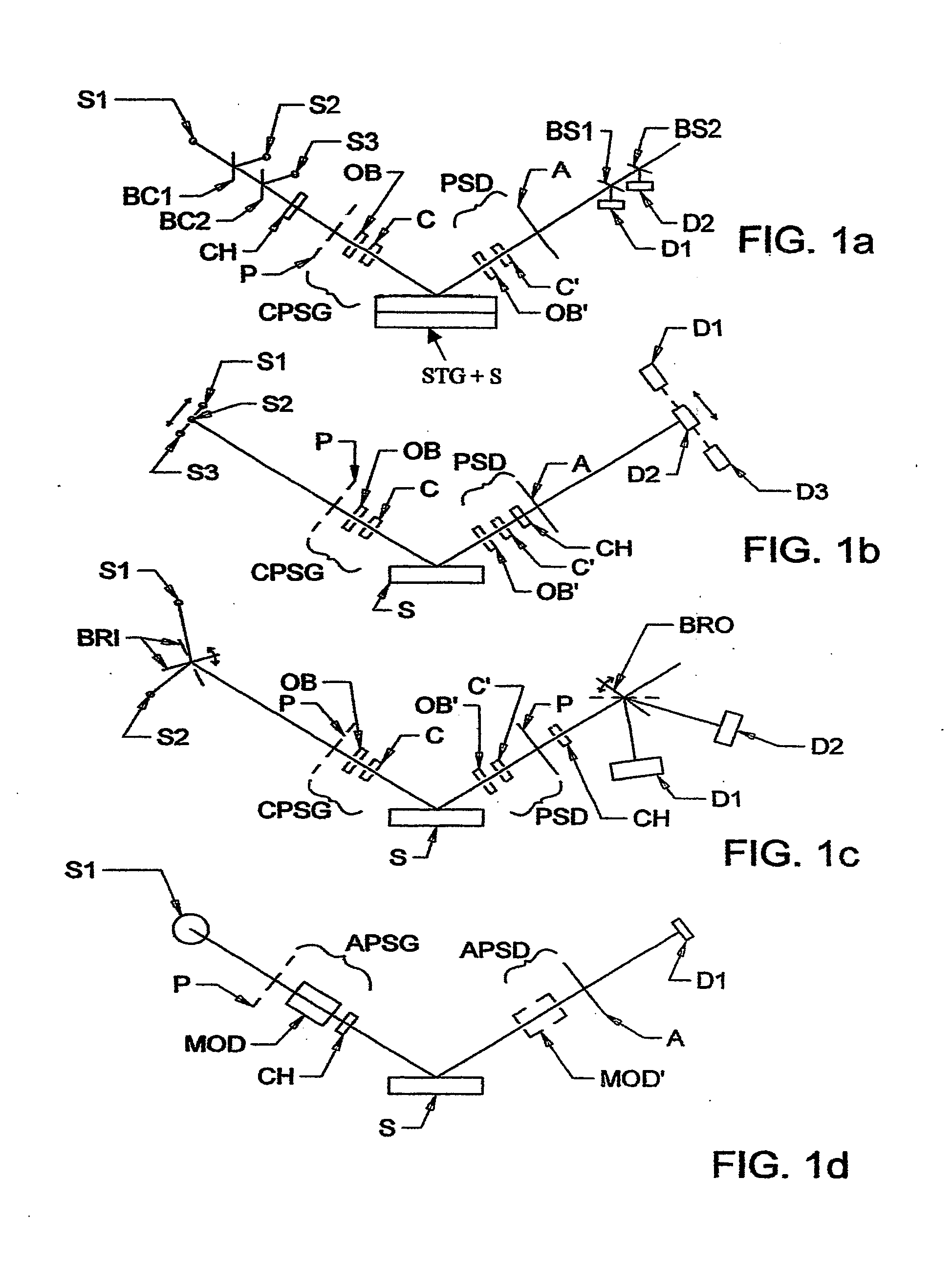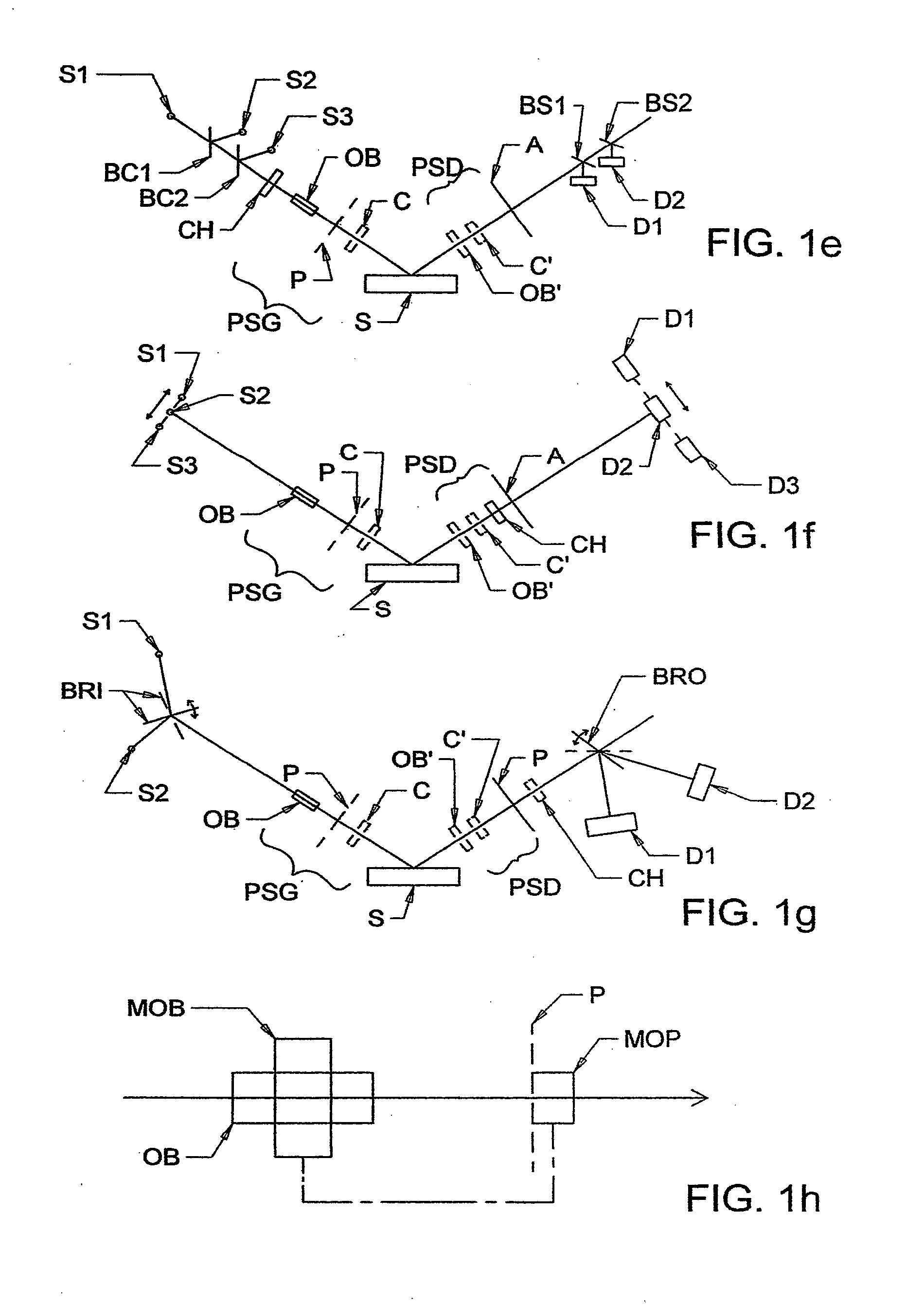Terahertz ellipsometer system, and method of use
a technology which is applied in the field of ellipsometry and polarimeter systems, can solve the problems of not being able to provide a synchrotron remotely, not being able to describe the application of ellipsometry or polarimetry, and not being able to provide a synchrotron
- Summary
- Abstract
- Description
- Claims
- Application Information
AI Technical Summary
Benefits of technology
Problems solved by technology
Method used
Image
Examples
Embodiment Construction
[0717]At the outset attention is directed to FIG. 8a, which shows a preferred present invention Terahertz Ellipsometer sequentially system comprising:[0718]a source (BWO) of terahertz electromagnetic radiation;[0719]a first rotatable polarizer (WGP1);[0720]a stage (STG) for supporting a sample (S);[0721]a second rotatable polarizer (WGP2);[0722]a detector (DET) of terahertz electromagnetic radiation.
[0723]Said terahertz ellipsometer or polarimeter system further comprises a first rotating element (RE1) and second rotating element (RE2) between said source and detector of electromagnetic radiation.
[0724]In use said source of terahertz electromagnetic radiation directs a beam (BI) of terahertz frequency electromagnetic radiation of a fundamental frequency to pass through said first rotatable polarizer, then reflect from a sample (S) placed on said stage (STG) for supporting a sample, then pass through said second rotatable polarizer, and as output beam (BO) enter said detector of elec...
PUM
 Login to View More
Login to View More Abstract
Description
Claims
Application Information
 Login to View More
Login to View More - R&D
- Intellectual Property
- Life Sciences
- Materials
- Tech Scout
- Unparalleled Data Quality
- Higher Quality Content
- 60% Fewer Hallucinations
Browse by: Latest US Patents, China's latest patents, Technical Efficacy Thesaurus, Application Domain, Technology Topic, Popular Technical Reports.
© 2025 PatSnap. All rights reserved.Legal|Privacy policy|Modern Slavery Act Transparency Statement|Sitemap|About US| Contact US: help@patsnap.com



